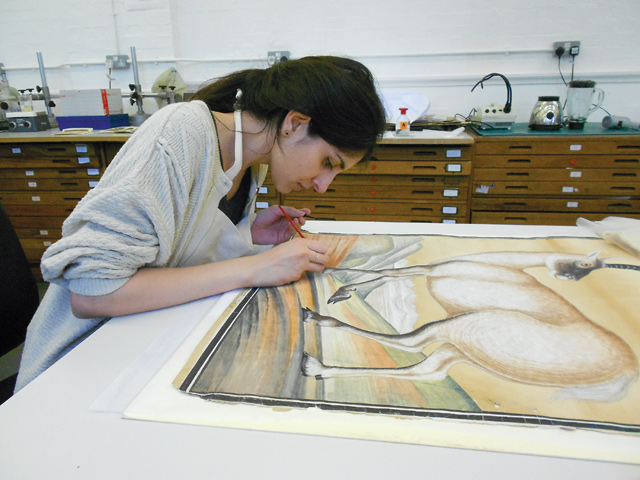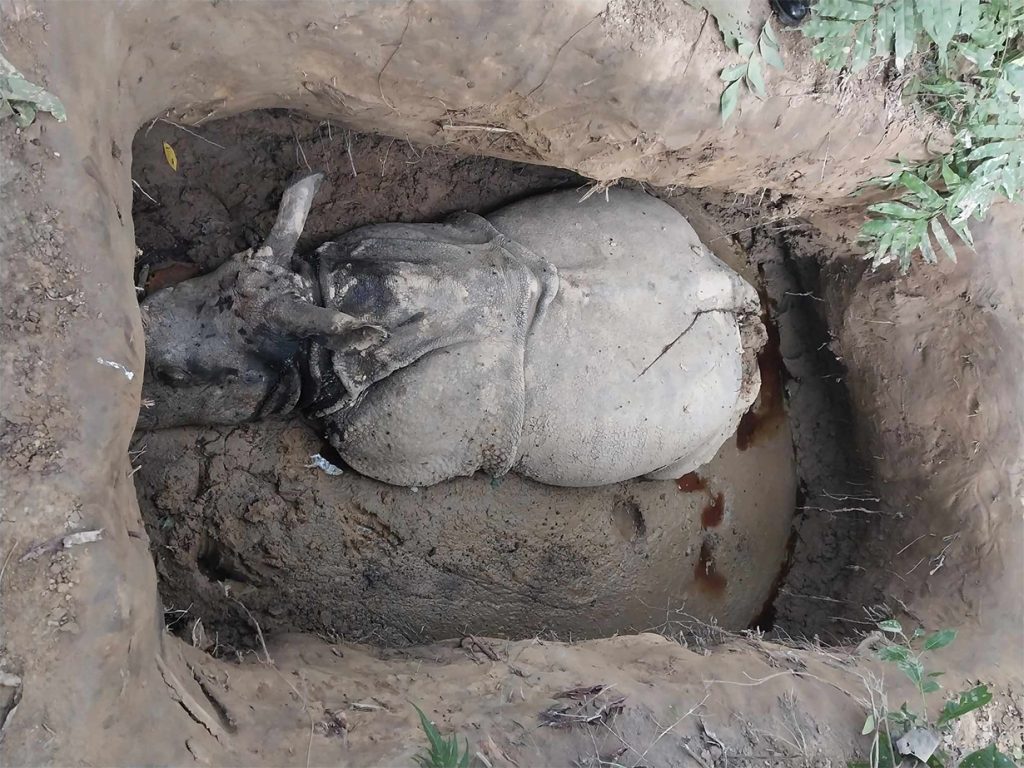An Antelope Story
- Rabin Giri


Zoological Society of London Library
In 2014, an undergraduate student majoring in paper preservation visited the library at the Zoological Society of London for her research. Puneeta Sharma knew the building housed a collection of old wildlife paintings, but it was a carelessly folded sketch that captured her attention. It depicted a chiru, a Tibetan antelope that is today among the most endangered species because of its valuable fur used to make expensive shawls.
After learning that Brian Houghton Hodgson, British Resident to Nepal from 1820-1843, commissioned the work from Nepali artist Rajman Singh, Sharma immersed herself in restoring the 83.5 x 63.5cm painting.

Zoological Society of London Library
“I really wanted to work on this, I could feel it in my heart,” says Sharma, who is from India.
During restoration, her thoughts often went to two lines in Devnagari written on the painting by Hodgson himself. When her parents, who moved to the UK in 1970, couldn’t translate it, she emailed the picture to her grandmother in India, but to no avail. Later, her uncle, Major General Vijakumar Dutt, who served in the First Gurkha Rifles and had spent a considerable amount of time in Nepal, deciphered the meaning: ‘The deer is roaming in the King’s Jungle.’ Sharma’s restoration of the painting paid off, as it was framed and put on a wall of the library at the Zoological Society. She says: “I hope this painting will be a medium for people to understand Nepal like I did, not just the chiru and Hodgson.”
Hodgson had handwritten on the back of the painting: ‘My Birds & Mammals done my painter send to me by Jang Bahudur’. This suggests that Jang sent several paintings, including 'Chiru', to the British Resident. Although Hodgson left Nepal before Jang came into power, the two enjoyed good relations, as revealed by the letters they exchanged, which are preserved at the British Museum.
After his tenure in Kathmandu, Hodgson stayed on in Darjeeling until 1858 studying Himalayan flora and fauna and Nepali language, caste and religion. He sent a total of 9,512 samples of wildlife from Nepal and Darjeeling to Britain: 672 of them were birds, of which 124 were ‘new to the world.'
The chiru was the first mammal Hodgson discovered, and in 1825, he sent the mammal’s fur and horn to his friend Clark Abel in Calcutta, who named the undiscovered mammal Antelope houghsonii. Hodgson himself carried out additional research and gave it another scientific name: Pantholopes houghsonii.
Based on Hodgson and Abel’s research, Nepal’s National Parks and Wildlife Conservation Act, 2029, lists the Tibetan antelope as a protected species. The animal was supposed to be extinct in Nepal, but some are said to exist in the high mountains.
In his book, The Prisoner of Kathmandu: Brian Hodgson in Nepal 1820-43, Charles Allen explains how a chiru raised at the monastery of the Tashi Lama (the seventh in a line of reincarnate Lamas, better known today as the Panchen Lama), was presented to the king of Nepal. Bhimsen Thapa then gifted the antelope to the British Resident, but within a month, the animal died of heatstroke. Hodgson later sent the animal’s fur to his friend Abel in Calcutta.
Source : Nepali Times





Feedback